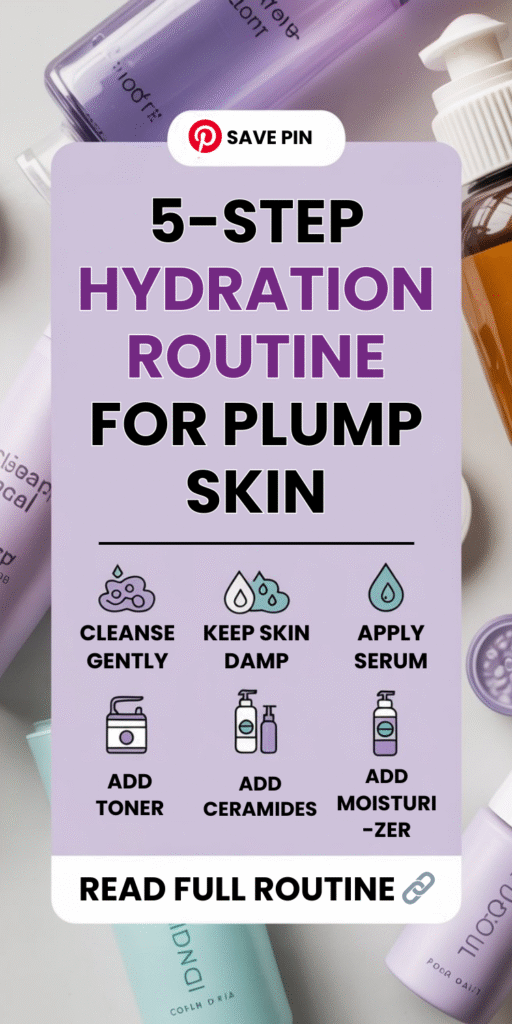If your skin feels tight but somehow oily, you’re not alone. That’s dehydration… your skin doesn’t lack oil, it lacks water. When this happens, skin overproduces oil, loses its glow, and feels irritated. So how to fix this? Keep reading this post to learn the difference between hydration and moisturization, then build a routine with ingredients that actually work.
Hydration vs Moisturization
Hydration pulls water into your skin with ingredients like hyaluronic acid or glycerin. Moisturization locks that water in with occlusives like squalane or petrolatum. You need both steps for soft, balanced skin.
| Skin Type | Hydration Strategy |
| Oily Skin | Lightweight humectants > heavy creams. |
| Dry Skin | Layer humectants + richer occlusives. |
| Sensitive Skin | Strengthen with ceramides before sealing. |
3 Mistakes That Keep Skin Dehydrated
Even with a full shelf of products, these mistakes can undo your efforts:
Ignoring Skin Type
Oily skin still needs water. When dehydrated, it produces more oil but stays thirsty underneath. Swap heavy creams for water-binding serums that hydrate without clogging pores.
Applying to Bone-Dry Skin
Humectants need water on the surface to work. Apply serums and toners on damp skin so they can pull hydration in.
Over-Exfoliating
Harsh scrubs or frequent acids damage the skin barrier—the shield that holds water in. Once damaged, hydration escapes no matter what products you use.
5 Hydrating Ingredients That Work
When building a routine, focus on ingredients proven to support water balance:
1. Hyaluronic Acid
A humectant that binds up to 1,000 times its weight in water, plumping and smoothing skin.
2. Glycerin
A powerful water magnet that strengthens the skin barrier while keeping hydration levels stable.
3. Ceramides
Essential lipids that fill gaps between cells, preventing water loss and irritation.
4. Urea
Both a humectant and mild exfoliant that attracts water while improving texture.
5. Occlusives
Occlusives likelike squalane or petrolatum form a seal over the skin to trap moisture inside.
The Damp Skin Method: Hydrating Skincare Ideas That Last
How you apply products matters as much as what is inside them. Follow this simple order:
- First of all, cleanse gently. Remove dirt without stripping natural oils.
- Make sure to keep your skin damp. Pat dry lightly so water remains on the surface.
- Then apply humectant serum. You can use hyaluronic acid or glycerin while skin is still damp.
- The next step is to strengthen with ceramides. Restore the barrier and prevent water loss.
- Seal with moisturizer. Lock everything in for long-lasting hydration.
Adapt These Habits for a Healthy Skin:
Skincare works best when supported by healthy habits.
Drink Water & Eat Hydrating Foods
Fruits and vegetables with high water content boost skin hydration from within.
Sleep Well
Overnight sleep is when the skin barrier repairs itself.
Control Your Environment:
Dry air, long hot showers, and flights deplete moisture. Use a humidifier and stick to lukewarm showers.
Quick Fixes
Keep a facial mist handy and apply lip balm to protect delicate skin.
Final Takeway
To fix dehydration, attract water with humectants and lock it in with moisturizers. Focus on ingredients like hyaluronic acid, glycerin, ceramides, urea, and occlusives, and apply them on damp skin in the right order. Support your products with smart lifestyle habits, and your skin will stay plump, resilient, and glowing.




